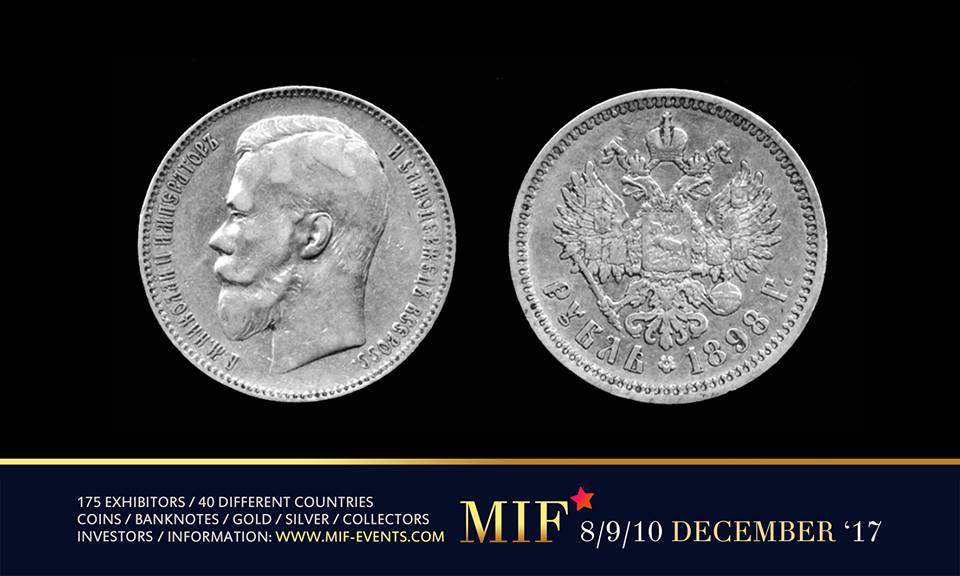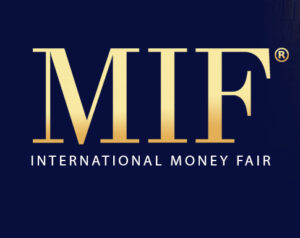
Russian Gold and Silver Coins Minted in 1895-1915
Several Russian exhibitioners and dealers will attend the MIF Fair in Maastricht and one of the Russian coin chapters is Imperial Russia with czar Nicolas II.
Avers of the most gold and silver coins minted in 1895-1915 is similar and carries the relief with the portrait of Russian Tsar Nicholas 2 and the inscription: ‘BY THE GRACE OF GOD NICHOLAS 2, EMPEROR AND RULER OF ALL RUSSIA’.
The reverse of the majority of the coins carries a small State Emblem of the Russian Empire in the form of a two-headed eagle, holding the scepter and the orb.
The breast of the eagle has the coat of arms of the city of Moscow framed by the chain of the Order of St. Andrew. The crown above the head of the eagle is decorated with ribbons. The wings of the eagle serve as the background for eight coats of arms of the kingdoms that made up the Empire: Kazan, Poland, Chersonesos, Georgia, Siberia, the Grand Duchies of Kiev, Novgorod and (united) Vladimir and the Grand Duchy of Finland.
The face value and the year of issue are found under the emblem. The milled edge of the coin is decorating with a symbol reminiscent of the ‘Greek key’ (5 ruble), or contains an impressed inscription on the content of pure gold (7 ruble 50 kopeck, 10 ruble and 15 ruble), or on the content of pure silver (50 kopeck and one ruble) and the initials münzmeister (mintmaster) of the Imperial Mint of Saint Petersburg who supervised the minting.
E. g. АГ (AG) stands for Apollon Grasgof (1895-1899), ФЗ (FZ) stands for Felix Zaleman (1899-1901), АР (AR) for Alexander Redko (1901-1905), ЭБ (EB) for Elikum Babayantz (1899, 1906-1913), and ВС (VS) for Victor Smirnov (1912-1915).
The silver coins of the Russian Empire that have been ordered in France have one star on the edge, and those ordered in Belgium have two star on their edge instead of the initials of the münzmeister.



